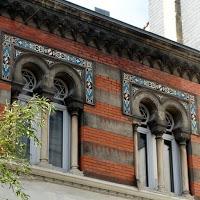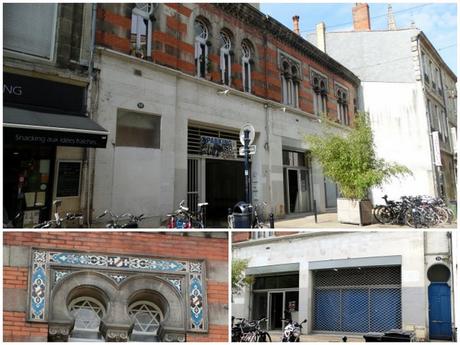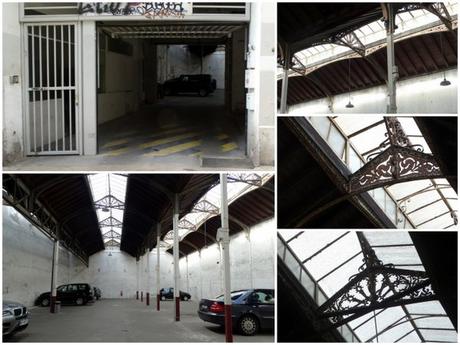 Rue Notre-Dame is one of the oldest and longest roads in the Chartrons district of Bordeaux. In amongst the elegant 18th-century buildings, timeless antique dealers and fashionable art galleries is a peculiar façade, the front of what used to be a renowned hammam (Turkish baths), “Les Grands Bains des Chartrons”.
Rue Notre-Dame is one of the oldest and longest roads in the Chartrons district of Bordeaux. In amongst the elegant 18th-century buildings, timeless antique dealers and fashionable art galleries is a peculiar façade, the front of what used to be a renowned hammam (Turkish baths), “Les Grands Bains des Chartrons”. The steam rooms, which were originally the property of one L. Lambert, opened in 1895 on the site where a convent once stood (known as “couvent des Carmes déchaussés” or “couvent des Petits-Carmes”). The baths were built to the designs of Bordeaux architect Eugène Gervais, who also conceived the Théâtre des Arts building on Rue Saint-Sernin and some impressive villas further north in Royan.
The architect dreamt up a structure which comprised two distinct sections. Roadside the building combined red brick and stone, and incorporated decorative features to give the baths an appealing, exotic feel: colourful tiles with Moorish-inspired patterns (produced either by local manufacturer Jules Vieillard or else by Choisy-le-Roi specialists Boulenger-Hautin et Cie.) and first-floor office/apartment windows incorporating star of St David motifs (which reportedly had no religious significance). Out of sight though was the second section, a spectacular Eiffelesque wood, glass and steel structure where the baths themselves were located.

The street-side view including, bottom-right, the main entrance to the baths.
Patrons would enter via the narrow door which is still visible to the right of the building and pass through the brick building, the ground floor of which housed the establishment’s mechanics: steam generators and machines, pumps and electrical systems (electrical lighting was present throughout the building). They would then access the baths, positioned in rows which were split across two main halls each closed by metal rail gates, one for ladies and one for gentlemen, along with two smaller halls where medicinal baths were installed. In all 70 baths were available across 63 cubicles (suggesting some of the cubicles contained several tubs!).In his 1900 book "À travers le vieux Bordeaux : récit et carnet de voyages", writer Ernest Laroche states that the recently-opened Grands Bains were "the biggest and most comfortable establishment of this type in Bordeaux and indisputably one of the most luxurious in France" ("le plus vaste et le plus confortable des établissements de ce genre installés à Bordeaux et un des plus luxueux de France, sans conteste"). Laroche also talks about "the gentle heat which would not affect the quality of the air" and "the gracious readiness of the staff" ("une chaleur douce sans vicier l’air, l’empressement gracieux du personnel…"). All-in-all it sounds like it was a nice place.

The gate which leads through to the car park where the baths once were. Note the ornate metalwork that forms an integral part of the structure.
It is unclear when the hammam closed for good, but according to a reliable source (a lady who I chatted with who works at Hôtel Notre-Dame across the road!) the building has been home to a succession of not-especially-durable ventures: in recent years it has been an art gallery, a china and porcelaine shop, and a garage (the sign of which is still partly visible at the time of writing). When I was there workers were busy on converting the ground floor into its next incarnation, a café.As for the impressive structure which housed the baths themselves, it is now a private car park used by first-floor residents and locals. The wood, glass and steel is very much present and it may just rank as one of the prettiest car parks in Bordeaux. Meanwhile, the comforting steam of the 19th-century baths is no more than a distant memory!
- Find it on the Invisible Bordeaux map:
- Grands Bains des Chartrons, 29 rue Notre-Dame, Bordeaux
- Thanks to Frances Sprout for suggesting this subject!
- Cet article est également disponible en français.
